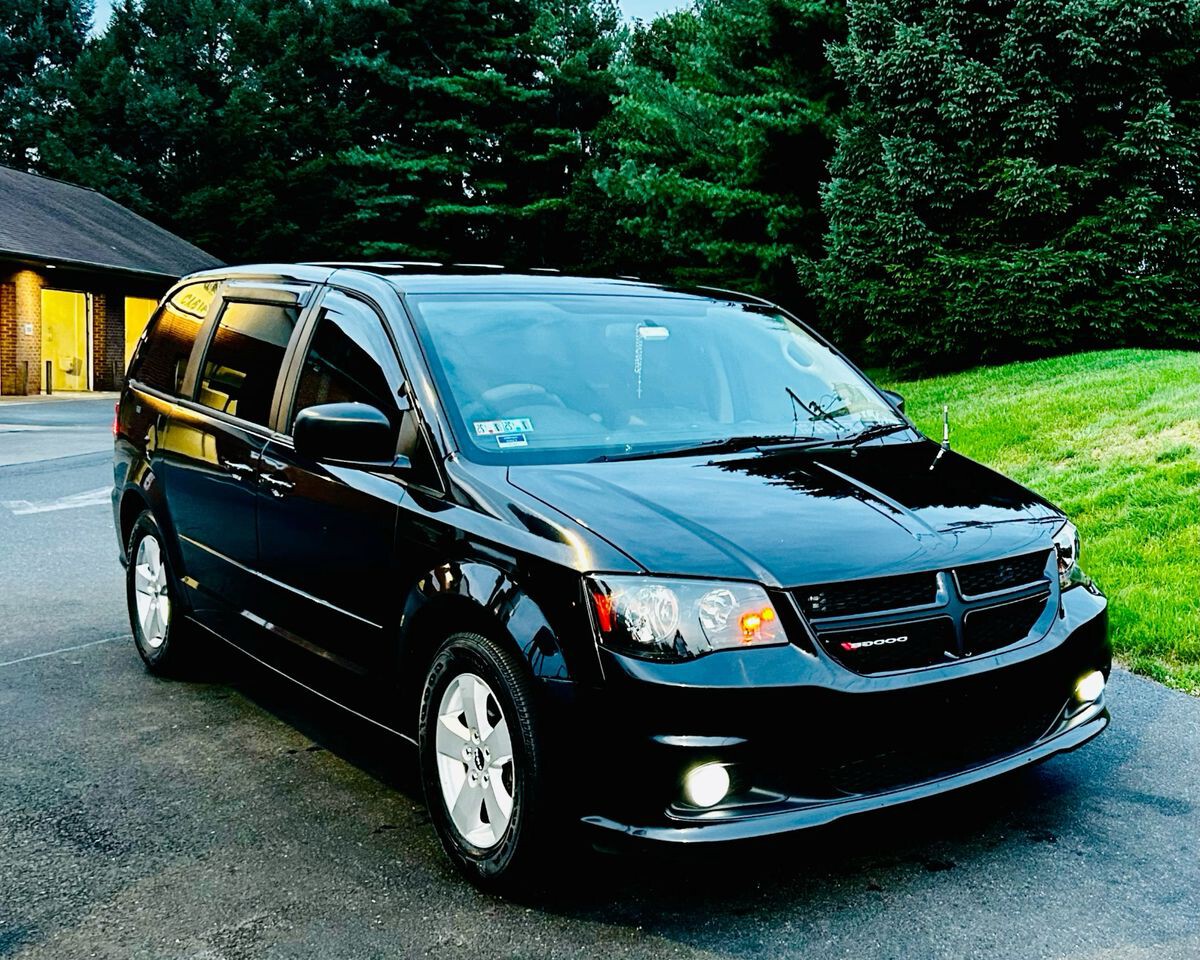Family cars are more than just a means of transportation—they’re the vehicles we rely on for school runs, weekend getaways, and cross-country vacations. In these roles, dependability isn’t a luxury; it’s a necessity.
A truly family-friendly car needs to be comfortable, spacious, fuel-efficient, and above all, reliable enough not to ruin plans or leave anyone stranded. When everything works as it should, the trip is smoother, safer, and far less stressful.
However, not every family vehicle lives up to that promise. Some cars that are marketed toward families are plagued with reliability issues, uncomfortable design quirks, or costly mechanical problems that rear their heads at the worst times—often in the middle of a vacation or during peak travel months.
Nothing derails a road trip quite like being stuck on the side of the highway with crying kids, overheating engines, or warning lights flashing.
In this guide, we’ll highlight five of the most reliable family cars—vehicles known for delivering peace of mind and lasting value.
Then, we’ll explore five family cars that are notorious for letting people down. If you’re buying with your family’s well-being in mind, these are the vehicles to seek out—and the ones to avoid at all costs.
Also Read: 5 SUVs With the Least Expensive Wheel Straightening and 5 That’ll Empty Your Wallet
5 Reliable Family Cars
When you’re shopping for a family car, dependability is everything. Unlike performance sedans or weekend convertibles, family vehicles aren’t for fun—they’re for duty.
School drop-offs, soccer practice, weekend grocery runs, and summer road trips all depend on a car that starts every time, performs without issue, and doesn’t drain the family budget with surprise repairs. In short, a family car should be a trusted member of your household, not a source of stress.
But reliability isn’t just about avoiding the mechanic. It also affects long-term ownership costs, resale value, and peace of mind—especially when you’re hundreds of miles from home with a fully loaded cabin.
A reliable family car should have a proven powertrain, low incidence of major repairs, and a strong track record of owner satisfaction over 100,000 miles or more.
It should also be comfortable, safe, and well-equipped, but without the kind of overly complex systems that tend to break down quickly.
In this section, we’re focusing on five family vehicles that have earned reputations for long-term dependability.
These aren’t just mechanically sound—they’re also practical, fuel-efficient, and often come with strong safety ratings. Whether you’re buying new or used, these vehicles offer some of the best chances of keeping your family moving without surprises.
We’re writing about them to help families make informed decisions that prioritize dependability over hype.
These cars have been vetted through years of real-world use, and owners consistently report that they hold up, even under demanding schedules and long road trips.
If you want a vehicle that protects your investment—and your vacation plans—these five models are excellent places to start.
1. Toyota Highlander
When it comes to dependable family haulers, few vehicles come as highly recommended as the Toyota Highlander. This three-row midsize SUV strikes a perfect balance between comfort, safety, and long-term reliability.
It’s a vehicle that families turn to when they want a smooth ride, room for kids and cargo, and the confidence that it’ll still be running strong 10 years down the road.
At the heart of the Highlander’s reputation is Toyota’s engineering discipline. The 3.5L V6 engine, offered for years in this model, is a time-tested workhorse that routinely hits 250,000 miles or more with minimal issues.
Whether you choose the V6 or the efficient hybrid variant, the powertrains are known for low maintenance requirements and bulletproof dependability.
Even better, Toyota has kept the vehicle’s systems relatively simple compared to flashier rivals—meaning fewer things that can break down as the miles pile up.
The Highlander also delivers on practicality and safety, with three usable rows (especially in newer models), a smooth ride, and top-tier safety scores from both the IIHS and NHTSA.
Toyota’s Safety Sense suite is standard on recent models, offering features like adaptive cruise control, lane-keep assist, and automatic emergency braking—must-haves for family travel.
Interior ergonomics are also family-friendly, with easy-access rear seats, abundant cup holders, and a simple, intuitive infotainment system.
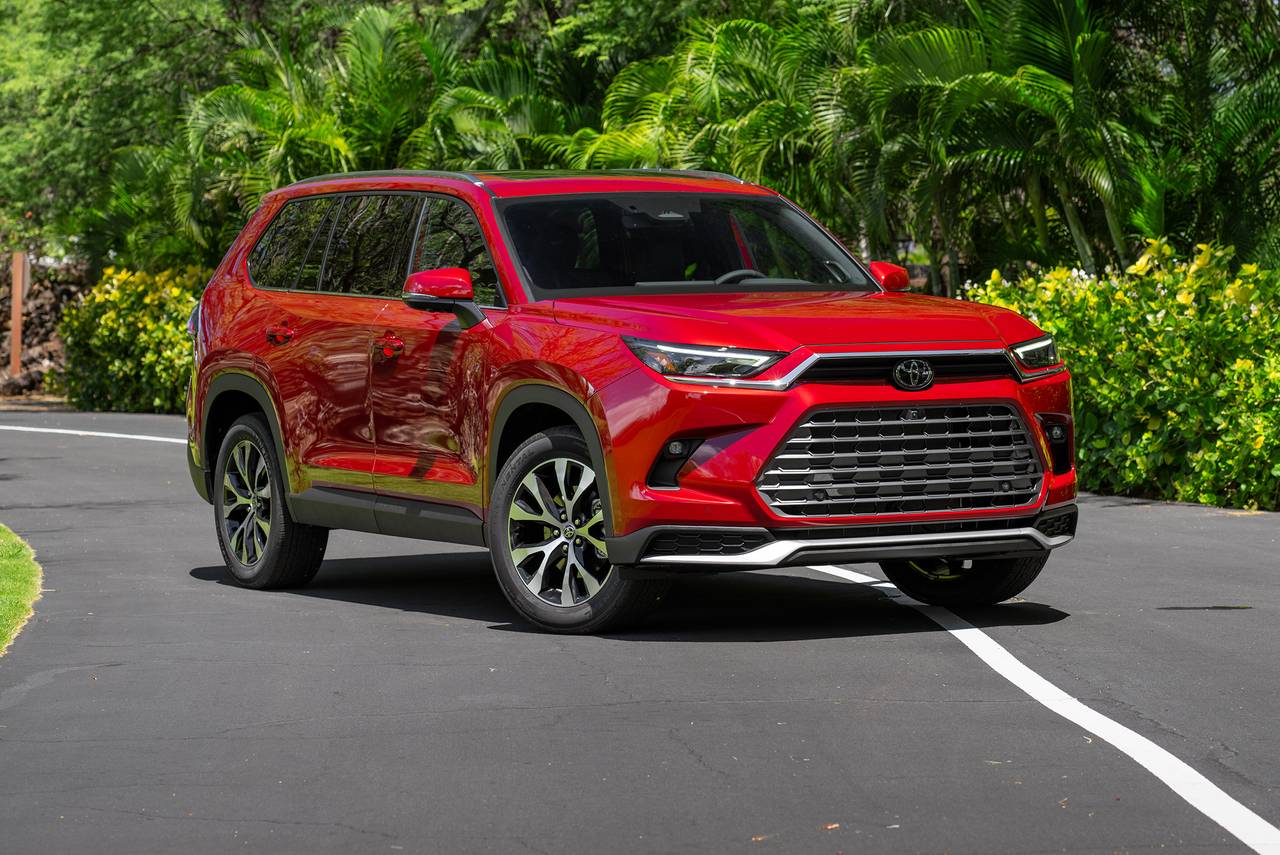
Another major win? Resale value. The Highlander holds its value extremely well compared to competitors like the Ford Explorer or Chevy Traverse.
That means if you decide to upgrade later on, you won’t take a big financial hit—something that really matters in the family car segment.
We’re highlighting the Highlander because it’s a complete package: reliable, comfortable, and ready for the demands of daily life and long-distance vacations.
It’s a top choice among parents, fleet operators, and long-time Toyota loyalists for good reason. If you’re looking for a family SUV that won’t quit, the Highlander is one of the most bulletproof investments you can make.
2. Honda CR-V
The Honda CR-V may not be flashy, but it’s a masterclass in low-stress, high-utility family transport.
For over two decades, this compact SUV has earned a reputation for blending practicality, comfort, and efficiency with unmatched reliability. It’s consistently one of the best-selling family vehicles in the U.S. — and for good reason.
Under the hood, the CR-V features long-proven powertrains that routinely exceed 200,000 miles with minimal drama. The earlier 2.4L naturally aspirated engine is widely praised for its simplicity and durability.
Later models (from 2017 onward) come with a 1.5L turbocharged engine, which delivers better fuel economy and solid performance — though it’s worth noting that some early versions had fuel dilution issues, largely addressed by software updates and improved maintenance practices.
Overall, the CR-V remains one of the most mechanically trustworthy compact crossovers on the market.
What makes it such a great family vehicle is the balance of interior space and maneuverability. It’s compact enough for city driving and parking, yet roomy enough for a full load of passengers and gear.
The rear seat space is generous, cargo capacity is among the best in class, and the ride quality is smooth even on long road trips. Parents also appreciate the wide-opening rear doors and low step-in height — making it stroller-, car seat-, and kid-friendly.
On the tech and safety side, newer CR-Vs come equipped with Honda Sensing, the brand’s suite of advanced driver assistance features.
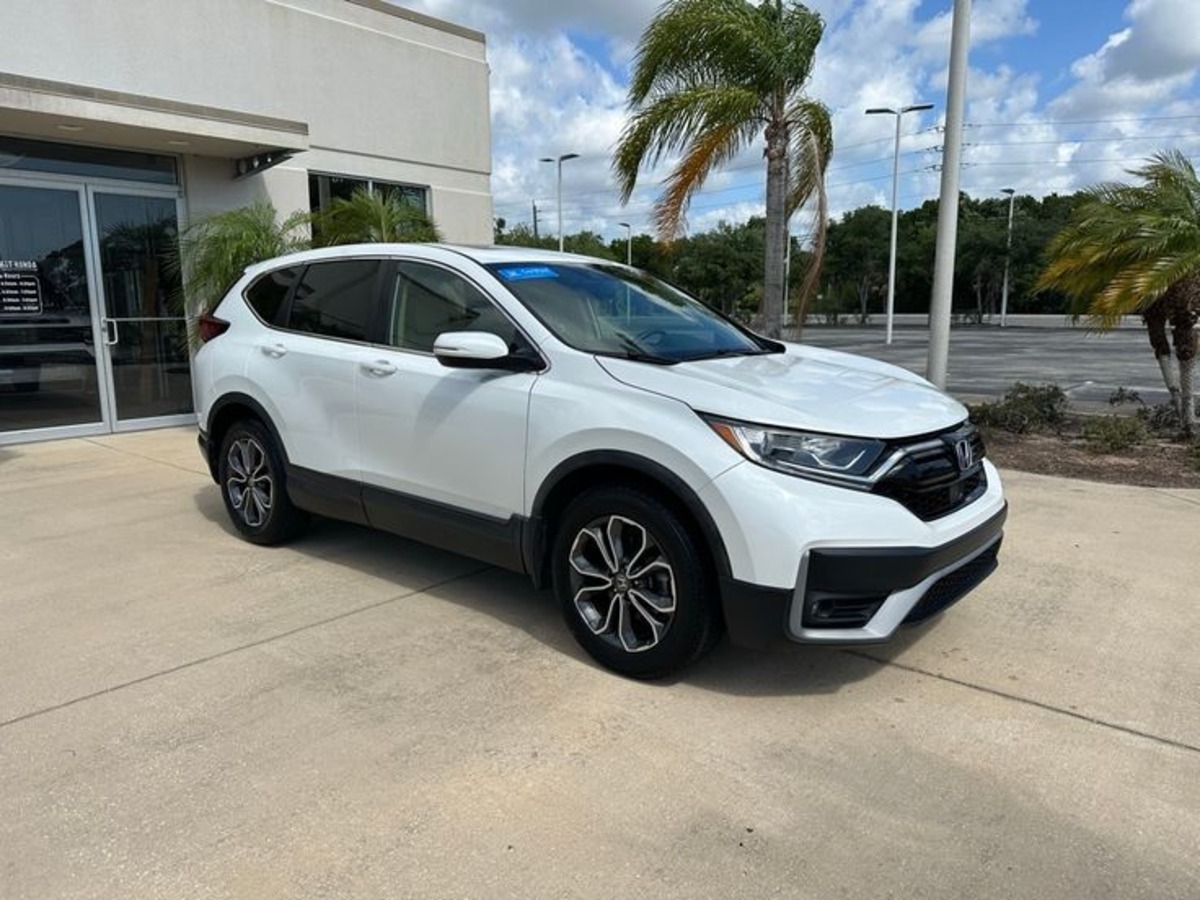
It includes adaptive cruise control, lane keeping assist, and collision mitigation braking — all standard on most trims. This not only improves safety but also reduces driver fatigue on long highway drives.
We’re including the CR-V because it excels in the areas families care about most: safety, efficiency, comfort, and dependability.
It’s the kind of car that just works—every day, in all conditions, with little fuss. And when the unexpected does happen, repair costs are typically modest, and Honda’s service network is widespread and trusted.
In short, the CR-V proves that you don’t need a giant SUV or luxury badge to keep your family safe and mobile—you just need a well-built car that does its job without fail.
3. Subaru Outback
The Subaru Outback stands out in the family vehicle category because it blends SUV utility with car-like drivability, all while delivering impressive long-term reliability.
For families who want something a bit more rugged—something that can handle snow, gravel roads, and weekend camping trips—the Outback is a smart and dependable choice.
The heart of its reliability lies in Subaru’s symmetrical all-wheel-drive system, which is standard on every trim. This setup isn’t just marketing hype; it gives the Outback exceptional year-round traction and stability, making it a favorite in regions with tough weather.
Whether you’re heading to the mountains or just navigating a wet school pickup line, the Outback provides a sure-footed ride.
Subaru’s 2.5L naturally aspirated engine is known for solid longevity and low maintenance needs, especially in post-2015 models where earlier oil consumption issues were mostly resolved.
The available 3.6L flat-six engine (offered until 2019) and newer turbocharged 2.4L engines also perform well, though the non-turbo base engine tends to be the long-term champ for reliability.
Subaru’s CVT transmission has improved greatly in recent years and is now considered stable and smooth in daily use.
Inside, the Outback offers a spacious cabin with wide seats, lots of headroom, and a large cargo area that can easily fit suitcases, sports gear, or pet crates.
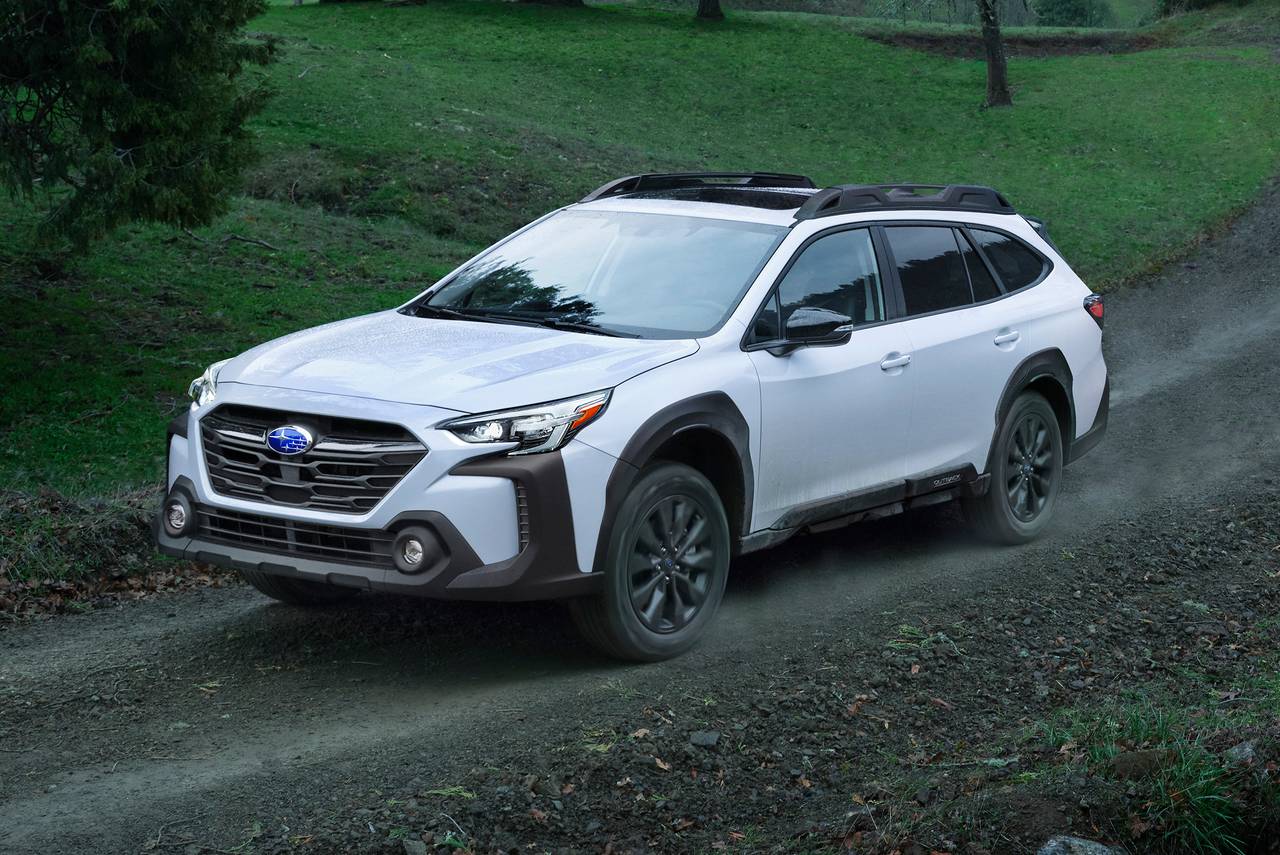
Rear legroom is generous, and the cabin is designed with road trips in mind—offering comfort without unnecessary complexity. It’s also a standout in terms of visibility, which makes it safer and easier to drive for parents of all ages.
Modern Outbacks come equipped with Subaru’s EyeSight safety suite, which includes adaptive cruise control, lane centering, and pre-collision braking. This has helped it earn Top Safety Pick+ ratings from IIHS year after year.
We’re featuring the Outback because it’s family-oriented without being boring. It can take on daily life and spontaneous weekend getaways with equal ease—and you won’t have to worry about it breaking down in the middle of nowhere.
If your ideal family car needs to be as adventurous as you are, the Subaru Outback is one of the most trustworthy options on the market.
4. Toyota Sienna
If your family needs space, comfort, and unwavering reliability, the Toyota Sienna should be at the top of your list. It’s not just a practical minivan—it’s a vehicle built with longevity, low maintenance costs, and real-world usability in mind.
For over two decades, the Sienna has been a go-to for families who want room for everyone and everything, without the stress of constant repairs or questionable reliability.
What sets the Sienna apart from rivals like the Dodge Grand Caravan or Chrysler Pacifica is its rock-solid drivetrain. Older models featured the time-tested 3.5L V6, an engine known for exceeding 300,000 miles with regular maintenance.
From 2021 onward, Toyota switched to a hybrid-only powertrain—a bold move that’s already proving successful, offering up to 36 mpg combined while maintaining Toyota’s reputation for durability.
Toyota also gives the Sienna a major edge with available all-wheel drive—a rarity in the minivan segment.
This makes it especially appealing for families living in colder climates, where snow and ice are regular obstacles. Paired with a smooth ride and a quiet cabin, the Sienna turns long-distance family travel into a peaceful experience.
Inside, it’s all about functionality. There’s ample space in all three rows, with plenty of legroom for adults and kids alike.
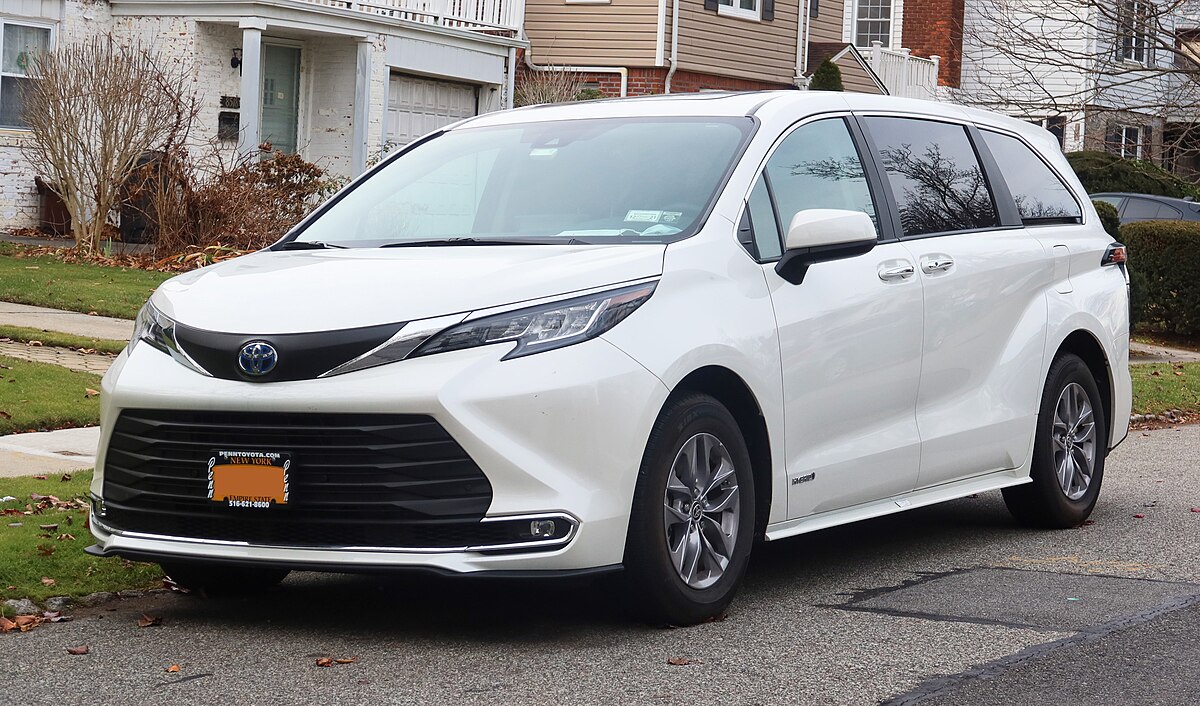
Sliding rear doors make entry and exit a breeze (especially in tight parking lots), and the flexible seating configurations mean it can easily transition from kid hauler to cargo van.
Toyota has also kept controls straightforward and intuitive—another plus for parents juggling car seats, groceries, and tight schedules.
Tech-wise, recent Siennas are well-equipped with Toyota Safety Sense, Apple CarPlay, Android Auto, and a suite of active safety features like lane-keep assist and blind-spot monitoring—all without overwhelming the driver with unnecessary complexity.
We’re highlighting the Sienna because it delivers reliability on a family-sized scale. It may not have the SUV badge or off-road persona, but when it comes to keeping your family moving year after year with minimal fuss, few vehicles are as trustworthy.
If vacations, carpools, and cross-country trips are part of your lifestyle, the Sienna is a minivan that won’t let you—or your wallet—down.
5. Mazda CX-5
The Mazda CX-5 proves that you don’t need to sacrifice style and driving enjoyment to get a practical and reliable family vehicle.
While most compact crossovers focus solely on utility, the CX-5 combines that functionality with premium build quality, impressive safety, and long-term dependability—making it an excellent family car for those who want substance with a bit of flair.
Mazda’s approach to engineering is refreshingly straightforward. The CX-5’s Skyactiv-G engines, particularly the 2.5L naturally aspirated four-cylinder, are known for their mechanical simplicity and longevity.
These engines routinely reach well over 200,000 miles with basic maintenance. There’s also a turbocharged version available for those wanting more power, but it’s the base engine that wins in long-term reliability.
Transmission issues are almost nonexistent, and the conventional 6-speed automatic has earned praise for its smoothness and durability.
Where the CX-5 really impresses is in its refined driving experience. It handles more like a sedan than an SUV, with responsive steering and confident cornering—an underrated perk for parents who spend a lot of time behind the wheel. And unlike many rivals, Mazda gives you this performance without compromising comfort or safety.
Inside, the CX-5 punches above its price point. The interior feels upscale and thoughtfully designed, with quality materials, user-friendly controls, and plenty of sound insulation.
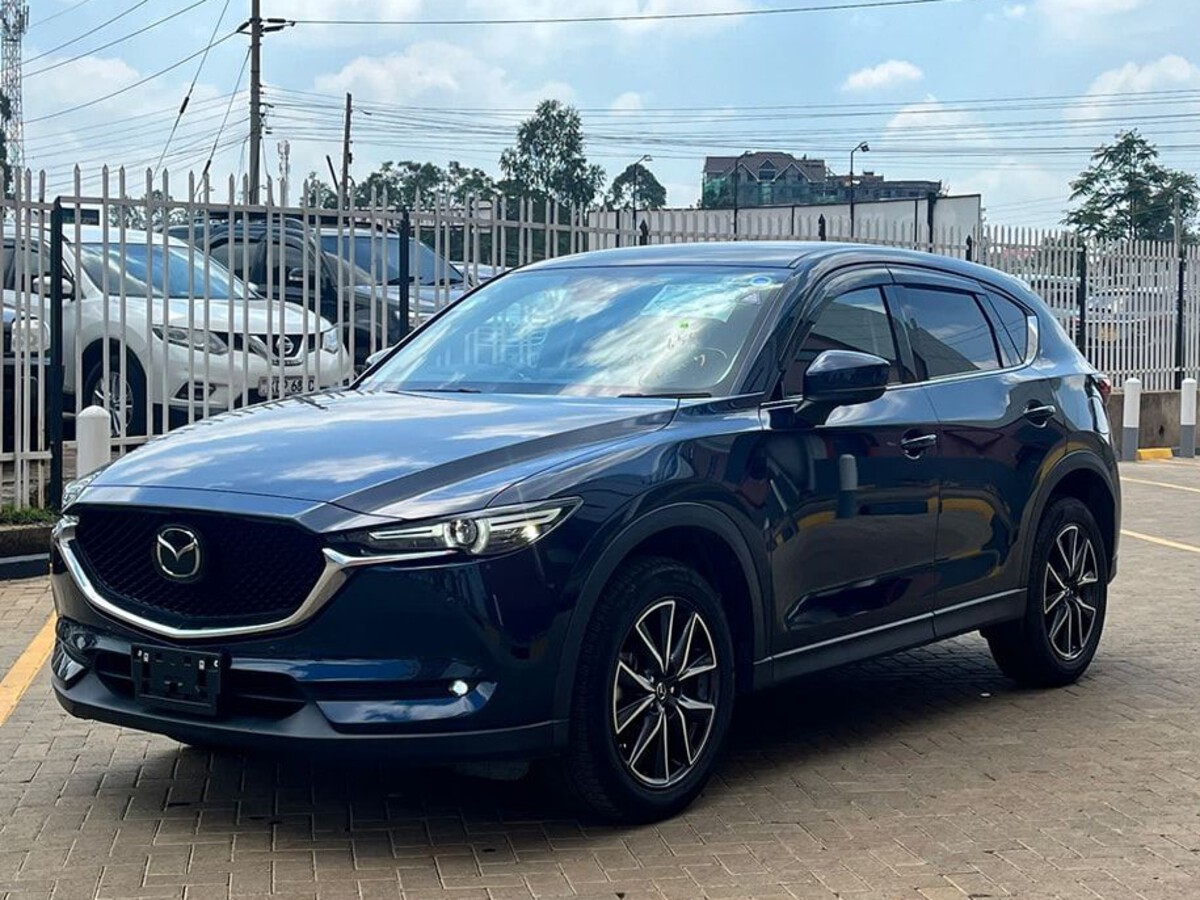
Rear seat space is generous enough for growing kids, and the cargo area—while not the largest in class—is easily accessible and wide enough for strollers, gear, or luggage for a long trip.
Safety is another standout. The CX-5 consistently earns IIHS Top Safety Pick+ honors, and Mazda includes a strong suite of standard safety features like forward collision warning, automatic emergency braking, adaptive cruise control, and lane-keeping assist—even on lower trims.
We’re featuring the CX-5 not only for its reliability, but because it offers a rare blend of durability and design. It’s a smart choice for families who value driving enjoyment but still want the confidence of low ownership costs and dependable performance.
If you’re looking for a compact SUV that goes the extra mile in more ways than one, the Mazda CX-5 is hard to beat.
5 That’ll Ruin Vacations
Vacations are supposed to be a time of rest, adventure, and family bonding—not roadside breakdowns and unplanned detours to the nearest service center.
Unfortunately, the wrong vehicle can turn a dream trip into a nightmare faster than you can say “check engine light.”
When you rely on your car to transport your family safely and comfortably, poor reliability or flawed engineering isn’t just an inconvenience—it’s a liability.
Some family cars look great in the showroom, boast a long list of features, or offer attractive price tags. But once you’re a few thousand miles into ownership—especially on a road trip with the car fully loaded—problems start to reveal themselves.
These can range from overheating, suspension failures, software glitches, engine issues, or transmission problems, all of which can leave you stranded in the worst places at the worst times. And when you’re far from home or towing a trailer, the consequences multiply quickly.
This section highlights five vehicles that have gained notoriety for letting families down, especially during long drives or heavy usage. These models may sell well or have big brand names attached, but their real-world reliability has disappointed owners time and again.
We’re writing about them not to criticize every driver who owns one, but to help buyers avoid expensive mistakes and travel headaches.
These aren’t just lemons—they’re vehicles that often combine flashy marketing with weak mechanical foundations. When you want peace of mind and stress-free vacations, these are the cars to keep off your list.
1. Chrysler Pacifica (Pre-2021 Gas-Only Models)
The Chrysler Pacifica entered the minivan market with high hopes, boasting a sleek design, advanced infotainment, and seating flexibility that many families found irresistible.
On paper, it seemed like the perfect travel companion. In reality—especially with gas-only models built between 2017 and 2020—the Pacifica often became a vacation’s worst enemy.
One of the biggest concerns involves the 9-speed automatic transmission, which is shared with other FCA vehicles. Owners have reported harsh shifting, hesitation, and full transmission failures, sometimes occurring in the first 50,000 miles.
This is not only a safety issue on long road trips—it’s also a financial burden, with repairs often exceeding $4,000.
Add to that issues with the engine stalling, check engine lights, and repeated software updates that still fail to permanently fix the problem, and you’ve got a vehicle that feels unreliable even when “repaired.”
Then there are the electrical gremlins. From failing infotainment screens to sliding doors that jam or stop working, the Pacifica’s advanced features have too often become liabilities.
On family road trips, where rear-seat entertainment and automatic doors are supposed to make life easier, these malfunctions become frustrating distractions that add stress instead of removing it.
While the Pacifica Hybrid introduced in later years has a slightly better reliability record, the early models also suffered from battery charging issues and recalls involving fire risk—making them a questionable choice for long-haul travel.
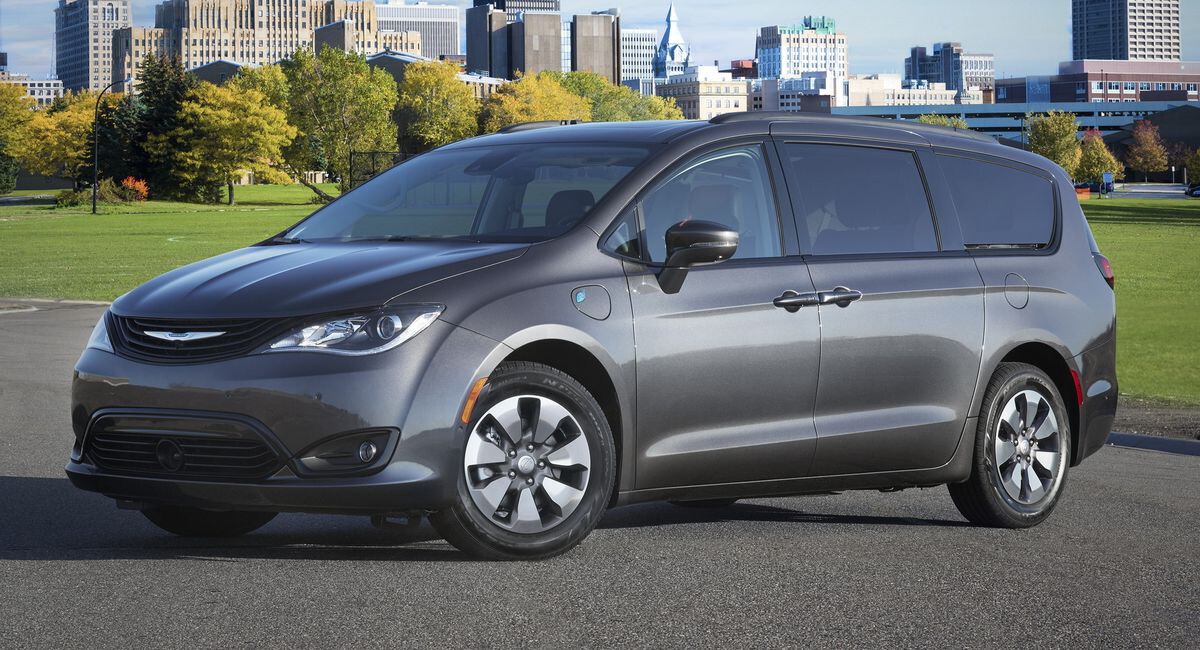
We’re including the Pacifica because it represents a classic case of great ideas hindered by poor execution. It’s spacious, quiet, and impressively equipped—but when it fails (and it often does), it fails in a way that disrupts your plans and drains your wallet.
Despite its comfort and clever design, too many families have found their vacations interrupted by tow trucks, dealer visits, or stuck tailgates.
If you’re planning frequent travel with kids and luggage in tow, the last thing you need is an unpredictable ride. Until Chrysler fully resolves these reliability issues across the board, the Pacifica—especially older gas-only models—remains a risky road trip partner.
2. Ford Explorer (2011–2019)
The Ford Explorer has long been marketed as a rugged, family-ready SUV ideal for road trips, towing, and weekend getaways.
But models from 2011 through 2019, particularly those with the turbocharged EcoBoost engines, have proven to be far less dependable than their marketing suggests—and for families planning vacations, that can spell disaster.
On the surface, the Explorer seems like a smart pick: three rows of seating, decent cargo capacity, a strong safety rating, and available all-wheel drive.
But under the hood, the 2.0L and 3.5L EcoBoost engines are known for a range of issues, including coolant intrusion, overheating, turbocharger failures, and premature head gasket breakdowns.
Many of these problems strike before 100,000 miles, and when they do, the repair bills often soar past $5,000—a heavy cost to swallow, especially on the road.
The 6-speed automatic transmission used during this generation also contributes to its poor reliability score, with frequent complaints of rough shifting, jerking, or complete transmission failure.
Combine that with electrical glitches, faulty HVAC systems, and sync infotainment bugs, and you’ve got a vehicle that can be as unpredictable as the weather during vacation season.
Another factor? The Explorer’s high curb weight and aggressive styling mask what is often a clunky and uncomfortable driving experience, especially when fully loaded.
Fuel economy suffers, handling is less than agile, and families on long road trips often report fatigue due to poor ride quality.
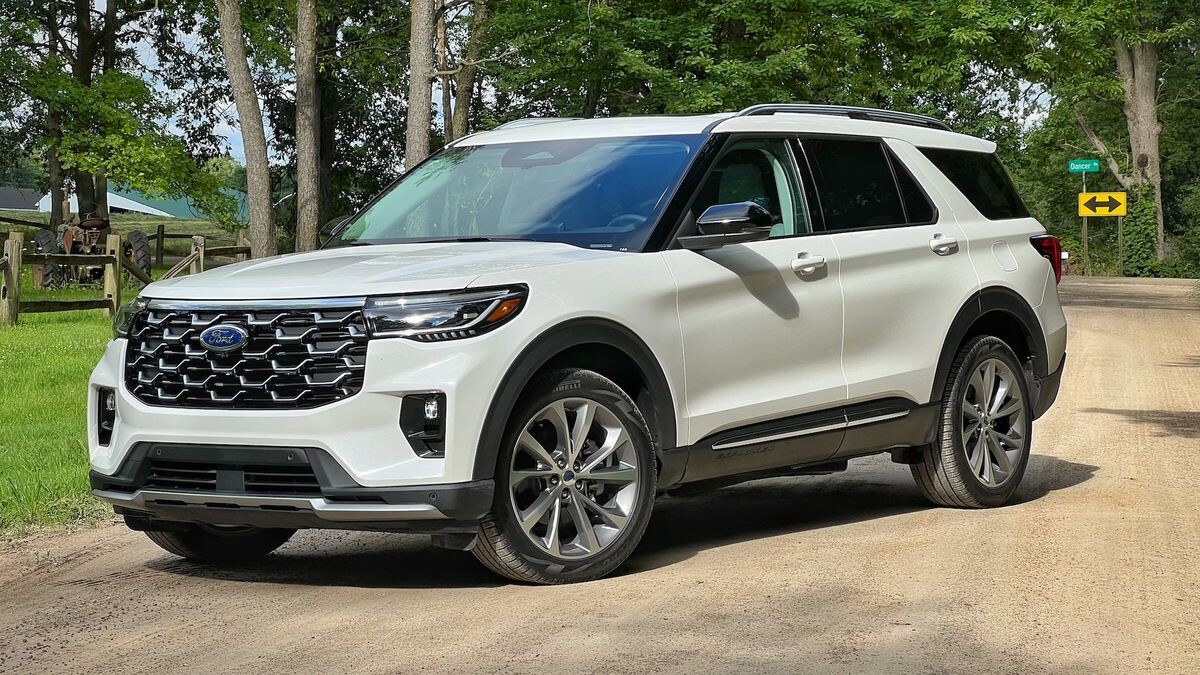
We’re including the 2011–2019 Explorer here because it has consistently underperformed in long-term reliability studies and real-world ownership experiences.
While newer models are attempting to shed this legacy, thousands of used Explorers from this era are still on the road—and still catching families off guard with big-ticket repairs at the worst possible times.
If you’re looking for a family SUV to carry you confidently on cross-country trips, the Explorer from this generation is one to avoid.
Its combination of mechanical fragility, costly repairs, and comfort issues makes it a frequent vacation wrecker—and a cautionary tale for families shopping for value in the used market.
3. Nissan Pathfinder (2013–2020)
The Nissan Pathfinder from 2013 to 2020 was marketed as a refined, family-friendly SUV with three rows, modern features, and a smooth ride.
It should’ve been a strong contender for road trip duties—but unfortunately, it has become one of the most frustrating vehicles for long-haul family use, especially when reliability is a priority.
The biggest problem? The CVT (Continuously Variable Transmission). Nissan’s Xtronic CVTs during this period were plagued by jerky behavior, sudden power loss, and complete transmission failure, often before reaching 80,000 miles.
For families on vacation, nothing kills the mood faster than losing power on a highway or getting stuck at a rest stop with no forward motion.
Replacement CVTs are notoriously expensive—often exceeding $4,000 to $5,000—and repeated failures even after repair have been reported by numerous owners.
It doesn’t stop there. The 3.5L V6 engine, while generally solid, has been known to suffer from timing chain issues and coolant leaks.
Combined with the CVT’s fragility, these problems have pushed the Pathfinder into the “avoid” category for families who need a vehicle they can trust when far from home.
Interior-wise, the Pathfinder has decent space and comfort, but quality concerns begin to show quickly. Many owners report rattling panels, peeling trim, and electrical quirks—none of which inspire confidence on a road trip.
The infotainment system in older models is dated and prone to freezing or rebooting mid-use, adding another layer of frustration during long drives.
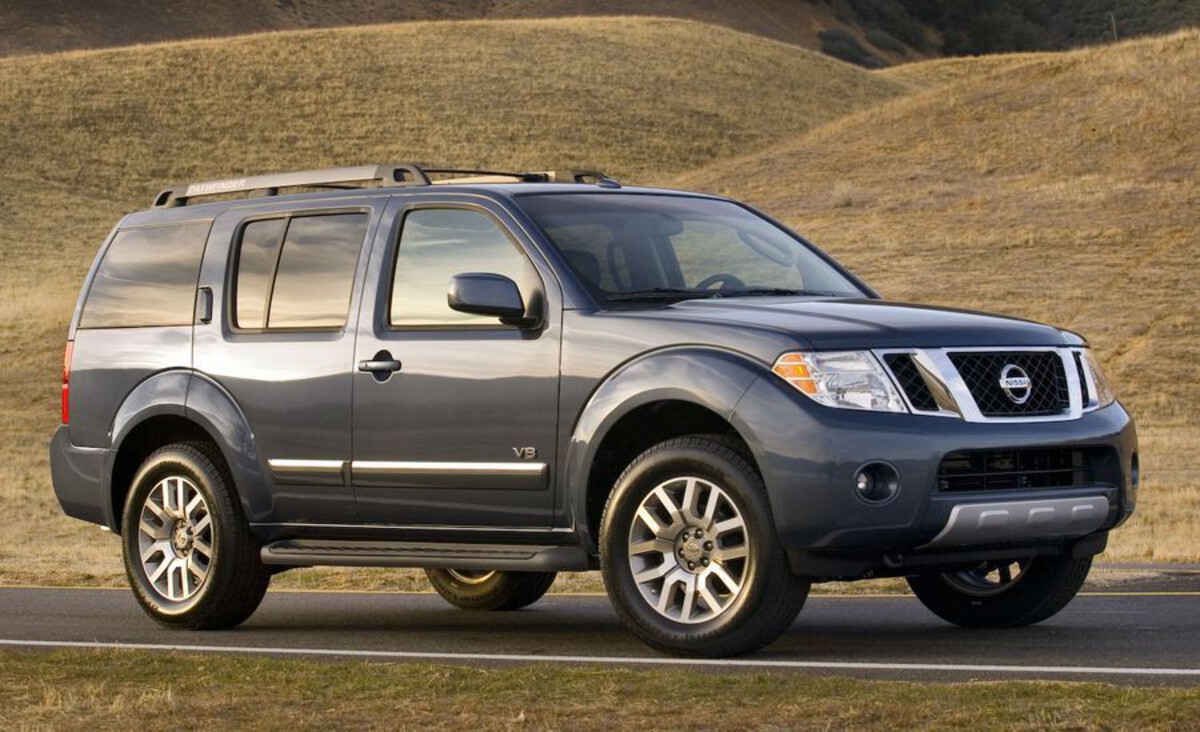
While the Pathfinder name used to symbolize rugged dependability, this generation has significantly tarnished that reputation. Even routine family use can reveal weak spots in the build quality and drivetrain.
For those looking at used models, the temptation of low resale prices may seem attractive—but that’s because the market knows what many buyers learn too late: this Pathfinder can leave you stranded.
We’re including it on this list because it’s a prime example of a family car that looks ready for adventure but often becomes a source of mechanical misery. For vacationing families in particular, the risk is too high and the reliability record too poor to recommend it with confidence.
4. Chevrolet Traverse (2009–2017)
The Chevrolet Traverse from 2009 to 2017 seems, at first glance, like an ideal vacation vehicle. With three rows of seating, ample cargo space, and a comfortable ride, it looks tailor-made for family road trips.
Unfortunately, beneath that spacious exterior lies a host of mechanical and electrical issues that have left many owners regretting their purchase—often from the side of the road.
The most notorious problems stem from the 3.6L V6 engine and the 6-speed automatic transmission, both of which have been plagued by long-term reliability issues.
The engine, in particular, suffers from timing chain wear, which can cause engine failure if not addressed in time. Repairs for a failed timing chain job can easily reach $2,500 to $4,000, and in many cases, it hits before the vehicle reaches 100,000 miles.
The transmission is another weak point. Harsh shifting, gear slippage, and total failure are common complaints—and just like with the engine, repairs aren’t cheap.
Many families have shared stories of vacations cut short by unexpected breakdowns, often followed by long waits for parts and expensive service.
On top of drivetrain issues, the Traverse has been known for electrical gremlins. These include intermittent instrument cluster failures, unresponsive infotainment systems, and malfunctioning air conditioning—the last thing you want to fail when you’re driving through summer heat with a car full of kids.
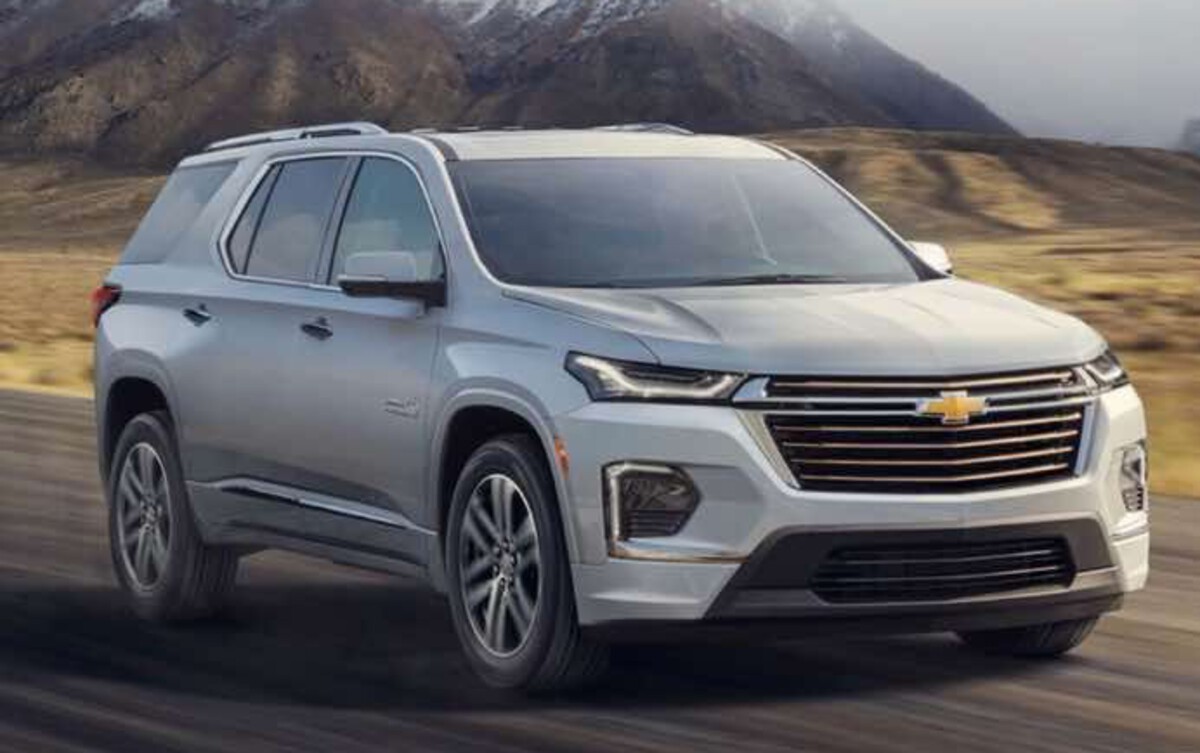
While the Traverse’s cabin is undeniably roomy and seats up to eight, its reliability record doesn’t support its role as a go-to family vehicle.
Add in rapid depreciation and a mediocre safety history (especially in earlier years), and the Traverse turns from a promising road trip machine into a high-risk gamble.
We’re including the 2009–2017 Traverse on this list because it’s a textbook example of a vehicle that offers the right features but fails in execution.
For families counting on their car to make it through a multi-state journey without incident, the chances of disappointment here are just too high. The spacious interior may feel road-trip ready, but the mechanics underneath tell a very different story.
5. Dodge Grand Caravan (2008–2020)
The Dodge Grand Caravan is one of the most recognizable minivans on the road, and for years it was marketed as the affordable choice for growing families.
With fold-flat Stow ’n Go seating, room for seven, and a bargain price tag, it seemed like the perfect companion for family vacations.
But despite its practical layout, the Grand Caravan from 2008 to 2020 has become infamous for long-term reliability issues that can derail even the best-planned road trip.
One of the biggest culprits is the 6-speed automatic transmission, which is known for early failure—often as early as 60,000 to 80,000 miles.
Hard shifting, gear slippage, or total breakdown are common complaints, with many owners reporting multiple rebuilds or replacements over the life of the vehicle.
With repair costs climbing to $3,000 or more, it’s a heavy financial burden for a vehicle that was supposed to be a cost-saving purchase.
The 3.6L Pentastar V6, while decent in newer Chrysler models, has a rocky history in earlier Grand Caravans. Issues such as ticking lifters, faulty cylinder heads, and premature oil consumption have plagued this otherwise capable powertrain.
Combine that with frequent electrical issues—including faulty power doors, failing TIPM modules, and erratic dashboard behavior—and you have a vehicle that feels increasingly unstable the longer you own it.
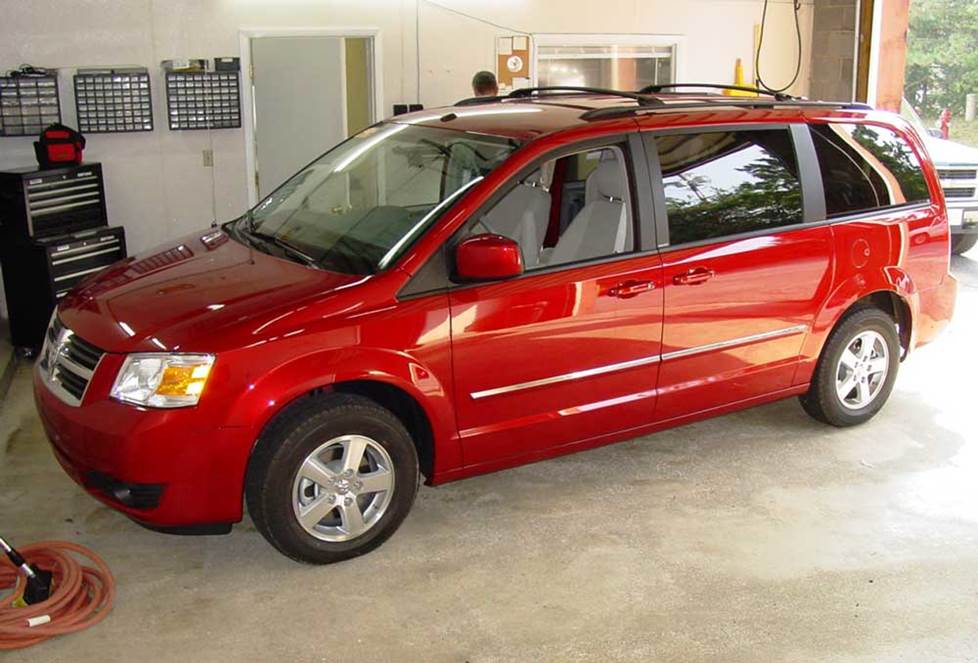
Inside, the Grand Caravan shows its age, especially in later model years when FCA stopped major updates. While the cabin is spacious, interior materials feel cheap, road noise is high, and infotainment and climate systems are prone to failure—all of which can turn a long-haul family trip into an uncomfortable ordeal.
We’re featuring the Grand Caravan here not just because it breaks down more than it should, but because it lures buyers in with value and space, only to cost more in the long run.
Its low resale value reflects the ownership experience—one that often includes stranded road trips, unexpected repairs, and plenty of frustration.
In short, the Dodge Grand Caravan may carry your family… just not always to the place you intended. If peace of mind and reliability are must-haves for your vacation vehicle, this is one van to avoid.
Family life moves fast, and your car needs to keep up. From morning drop-offs to weekend road trips and cross-country summer vacations, your vehicle becomes the backbone of your routine—and your adventures.
Choosing the right one can make those moments easier, smoother, and more enjoyable. But choosing the wrong one? That can quickly turn cherished plans into frustrating setbacks.
In this guide, we looked at two sides of the same coin. On one side are the 5 Reliable Family Cars—vehicles like the Toyota Highlander, Honda CR-V, Subaru Outback, Toyota Sienna, and Mazda CX-5.
These models have built their reputations on real-world dependability, not just showroom shine.
They perform when loaded with people and luggage, they start every morning without complaint, and they rarely interrupt your life with costly surprises. For families looking for peace of mind, these are vehicles that return your investment mile after mile.
On the flip side, we explored 5 That’ll Ruin Vacations—models like the Chrysler Pacifica, Ford Explorer, Nissan Pathfinder, Chevrolet Traverse, and Dodge Grand Caravan. These vehicles often promise the world: space, features, value.
But time and time again, they fall short when reliability matters most, particularly on long road trips or during heavy usage.
From transmission failures to electrical chaos, they remind us that no amount of cupholders or clever seating makes up for a stranded family on the interstate.
The truth is, family travel puts cars to the test. It’s not just about how a vehicle performs when new—it’s about how it holds up after 80,000 miles, under load, far from home.
That’s why it’s so critical to look beyond marketing claims and consider real-world performance, repair records, and owner satisfaction.
A great family car isn’t just transportation—it’s a reliable partner in the story of your life. Choose wisely, and it will carry you through birthdays, vacations, and first days of school without ever letting you down. Choose poorly, and it may cost more than just money—it could cost memories.
Also Read: 5 Cars That Routinely Cross 400K Miles and 5 That Break at 100K

